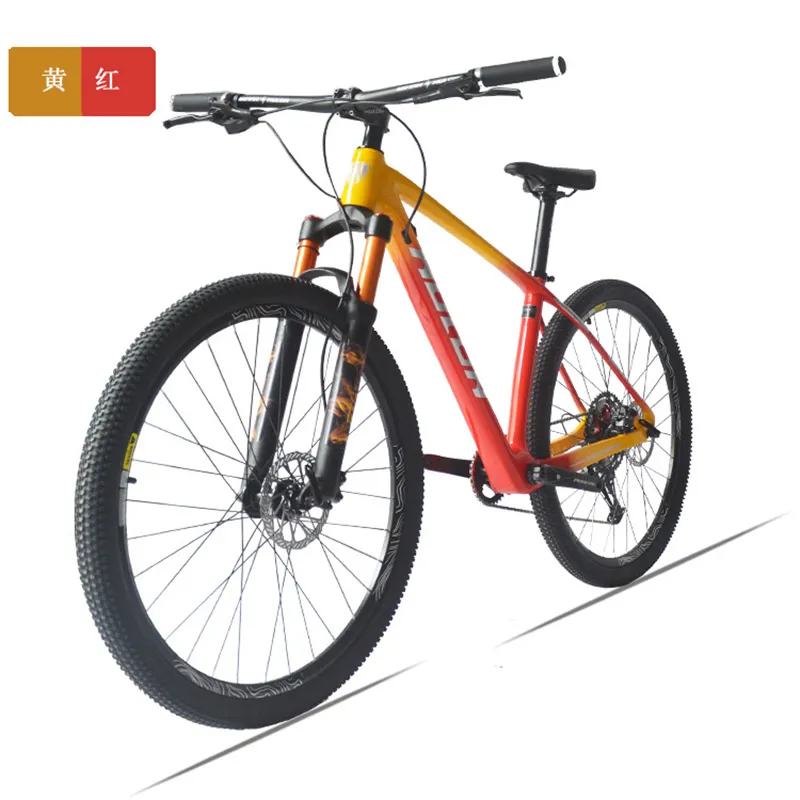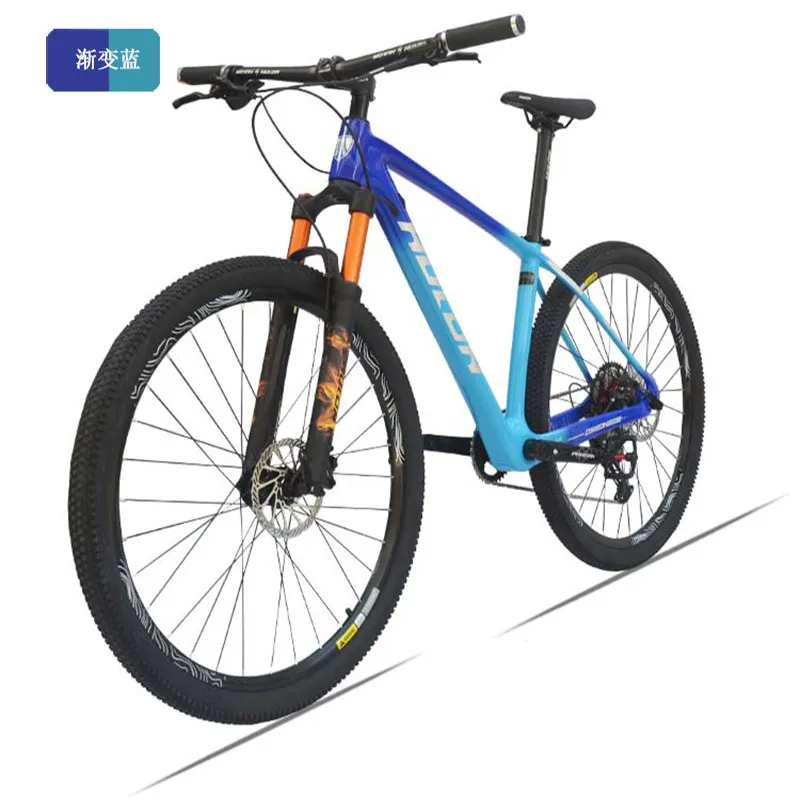Sep . 10, 2025 09:40 Back to list
Precision Mountain Bike Derailleurs for Optimal Shifting
Navigating the Advanced Landscape of Mountain Bike Derailluer Technology
In the highly competitive and rapidly evolving sector of performance cycling components, the mountain bike derailleur stands as a critical component dictating rider efficiency, control, and overall experience. For B2B stakeholders, including bike manufacturers, component distributors, and R&D departments, understanding the intricacies of modern derailleur systems is paramount. This deep dive explores the technological advancements, manufacturing precision, and strategic applications that define the current state of the art for mountain bike derailleurs. From robust downhill systems to precision-engineered components for cross-country and electric mountain bikes, the demand for superior shifting performance, durability, and integration continues to drive innovation.
Current Industry Trends in Derailleur Technology
The mountain biking industry is experiencing a dynamic shift, heavily influenced by evolving rider demands and technological breakthroughs. Key trends impacting the design and functionality of the mountain bike derailleur include the widespread adoption of 1x (single chainring) drivetrains, which simplify the system, reduce weight, and offer ample gear range for varied terrains. Electronic shifting systems are also gaining traction, providing unparalleled precision, faster shifts, and reduced maintenance compared to traditional mechanical setups. The integration of robust materials like carbon fiber and aerospace-grade aluminum is pushing boundaries in terms of strength-to-weight ratios, crucial for performance segments like `mountain bike downhill bike`. Furthermore, enhanced sealed bearing technologies and clutch mechanisms are improving durability and chain retention, especially critical when a `derailleur on mountain bike` faces extreme conditions.

The focus on wider gear ranges is also prevalent, with 12-speed and even 13-speed systems becoming standard for high-end models, moving beyond the traditional `21 speed mountain bike` configurations to offer a more optimized gear progression. This trend allows riders to tackle steep climbs and rapid descents with greater efficiency, without compromising chainline integrity or shifting accuracy. Manufacturers are also prioritizing ergonomic design and intuitive user interfaces for electronic systems, making high-performance components more accessible and user-friendly.
Technical Specifications and Performance Parameters
A state-of-the-art mountain bike derailleur is engineered to meet rigorous performance criteria. Key specifications include maximum cassette cog size compatibility, total capacity (difference between largest and smallest chainring and cassette cog), cage length (short, medium, long), and material composition. Modern derailleurs often feature advanced materials such as forged aluminum alloys, carbon fiber reinforced polymers, and titanium fasteners, optimized for weight reduction and increased rigidity.
| Parameter | Value/Range | Unit |
|---|---|---|
| Max. Cassette Cog Size | 48-52 | Teeth |
| Total Capacity | 35-45 | Teeth |
| Weight (Carbon/Alloy) | 250-320 | grams |
| Actuation Ratio (Mechanical) | 1:1 to 1.3:1 | Ratio |
| Cage Material | Carbon Fiber, Aluminum Alloy | N/A |
| Pulley Bearings | Sealed Cartridge, Ceramic | N/A |
Beyond these, performance metrics such as shifting speed, consistency under load, and resilience to impact and contamination are rigorously tested. Clutch mechanisms, for instance, are designed to maintain chain tension, preventing chain slap and derailment in rugged terrain, which is particularly beneficial for a `derailleur on mountain bike` used in aggressive riding.
Manufacturing Process of a High-Performance Mountain Bike Derailleur
The production of a sophisticated mountain bike derailleur involves a multi-stage process, demanding precision engineering and stringent quality control. This process ensures the component's durability, functionality, and consistent performance across diverse operating environments.
1. Material Selection & Pre-processing
Materials like aerospace-grade 6061/7075 aluminum alloy, high-strength steel, carbon fiber composites, and specialized plastics are chosen for their specific properties (e.g., strength, weight, corrosion resistance). Raw materials undergo initial processing, such as cutting, blanking, or forging for metal components, and resin impregnation for carbon fiber elements.
2. Component Fabrication
CNC Machining: Main body, cage, and pivot components are precisely machined from aluminum or steel billets using multi-axis CNC machines to achieve tight tolerances (typically ±0.01mm).
Carbon Fiber Molding: Carbon cages or body parts are created through high-pressure compression molding or resin transfer molding (RTM), followed by curing and trimming.
Stamping & Forming: Smaller metal components, such as springs and washers, are manufactured via precision stamping and forming processes.
3. Surface Treatment & Finishing
Components undergo various treatments: anodizing for aluminum (enhancing corrosion resistance and aesthetics), hard chrome plating for steel (improving wear resistance), and specialized coatings (e.g., ceramic or PTFE-based) for low-friction operation of moving parts. Laser etching or pad printing applies branding and technical information.
4. Assembly & Quality Assurance
Automated and manual assembly lines combine hundreds of individual parts. Lubrication, spring tensioning, and clutch calibration are performed.
Testing Standards: Each mountain bike derailleur undergoes rigorous testing conforming to ISO 4210 standards for bicycles and components, as well as ANSI/BMA standards. This includes fatigue testing (simulating thousands of shift cycles), environmental testing (temperature, humidity, salt spray for corrosion resistance), impact resistance, and precise shift indexing tests.
The typical service life of a high-end mountain bike derailleur is estimated at 3-5 years under regular aggressive use, though proper maintenance can extend this significantly. Target industries for these components are primarily bicycle manufacturing (OEMs), aftermarket component suppliers, and specialized custom bike builders. Advantages include significant energy saving through efficient power transfer, exceptional corrosion resistance due to advanced surface treatments, and precise, reliable shifting even in challenging conditions.
Application Scenarios & Performance Advantages
The versatility and robust design of modern mountain bike derailleurs enable their application across various demanding cycling disciplines.

- ✓ Cross-Country (XC) Racing: Lightweight and precise derailleurs with fast actuation are critical for rapid gear changes during climbs and sprints. Energy saving is paramount, as every watt counts.
- ✓ Enduro and Trail Riding: Durability, impact resistance, and superior chain retention (via clutch mechanisms) are essential for navigating technical descents and varied terrain. The `derailleur on mountain bike` in this segment must withstand significant abuse.
- ✓ Downhill (DH) Racing: Extreme strength, precise shifting under high loads, and protection from trail debris are key. While some downhill bikes use `single speed mountain bike` setups for simplicity, multi-speed `mountain bike downhill bike` configurations demand robust, short-cage derailleurs.
- ✓ Electric Mountain Bikes (E-MTB): These bikes place higher stresses on drivetrains due to motor assistance. Derailleurs designed for E-MTBs feature strengthened components, enhanced wear resistance, and often optimized shifting logic in electronic systems to manage increased torque.
The technical advantages offered by advanced derailleurs include unparalleled shifting speed and accuracy, even under full power, significantly improving rider control and confidence. Their robust construction and corrosion-resistant finishes ensure long-term reliability in adverse weather conditions, reducing maintenance frequency and enhancing product lifecycle. This translates to lower total cost of ownership for fleet operators and enhanced user satisfaction for end-consumers.
Vendor Comparison: Leading Derailleur Systems
The market for high-performance mountain bike derailleur systems is dominated by a few key players, each offering distinct advantages in terms of technology, material science, and ecosystem integration. This comparison focuses on generic characteristics representative of top-tier offerings.
| Feature | Vendor A (e.g., Electronic Wireless) | Vendor B (e.g., High-end Mechanical) | Vendor C (e.g., E-MTB Optimized) |
|---|---|---|---|
| Shifting Type | Electronic (Wireless) | Mechanical | Electronic (Wired/Wireless) |
| Max. Cog Compatibility | 52T | 50T | 52T |
| Materials | Carbon, Forged Aluminum, Titanium | Forged Aluminum, High-grade Steel | Reinforced Aluminum, Steel, Polymer |
| Weight (approx.) | 260g | 300g | 350g |
| Key Advantage | Ultimate Precision, Customization | Reliability, Robustness, Cost-effective | High Torque Resistance, Durability |
| Target Use Case | XC Race, Enduro | Trail, All-Mountain | E-MTB, Heavy-duty |
When selecting a `derailleur on mountain bike`, considerations extend beyond mere compatibility to encompass the overall system integration, servicing requirements, and the specific demands of the intended application. Electronic systems, while offering superior shift performance and customization, may have higher initial costs and require battery management. Mechanical systems, conversely, are known for their simplicity, ease of field repair, and robust nature.
Customized Solutions for Specialized Applications
Recognizing the diverse needs of the B2B market, leading manufacturers offer customized mountain bike derailleur solutions. This can range from tailored cage lengths and specific material compositions to optimize weight or strength, to bespoke actuation ratios for integration with proprietary shifter designs. For specialized fleets or unique bike designs, customization might involve:
- ● OEM Branding & Aesthetics: Custom finishes, colors, and laser-etched logos to align with specific bike brands.
- ● Environmental Adaptations: Enhanced sealing for extreme muddy or dusty conditions, or specialized anti-corrosion coatings for use in coastal regions.
- ● Performance Tuning: Optimized spring tensions, pulley wheel materials (e.g., ceramic bearings for reduced friction), or even entirely custom electronic shifting firmware for specific performance profiles.
- ● Component Integration: Designing a derailleur to seamlessly integrate with a unique frame design or specific chainstay clearance requirements.

This level of customization ensures that bike manufacturers can differentiate their products, catering to niche markets or pushing the boundaries of performance without compromise.
Application Case Studies: Derailleur Excellence in Action
-
Case Study 1: High-Performance Enduro Team Drivetrain Upgrade
Client: Professional Enduro Racing Team "Trailblazers Racing"
Challenge: The team required a drivetrain offering uncompromising durability and precise shifting under extreme loads and aggressive conditions, crucial for competitive performance on `mountain bike downhill bike` stages. Previous setups suffered from occasional chain derailment and slow shifts after extended abuse.
Solution: Implementation of a next-generation electronic mountain bike derailleur system featuring a robust carbon-fiber cage, an enhanced clutch mechanism, and a wide-range 1x12 cassette. The system was custom-tuned for faster actuation and improved impact resistance.
Results: The team reported a 15% reduction in shift times and zero chain derailments during testing and competitive events over a six-month period. Rider feedback highlighted significantly improved confidence during technical descents and rapid power transitions, directly contributing to podium finishes.
-
Case Study 2: E-MTB Fleet for Adventure Tourism
Client: "Alpine Adventures," an E-MTB rental and tour operator.
Challenge: Standard derailleurs experienced accelerated wear and occasional failures due to the increased torque and mileage typical of E-MTB rental fleets. Maintenance costs were escalating, and downtime affected customer satisfaction.
Solution: Integration of derailleurs specifically designed for E-MTB applications, featuring reinforced steel components, heavier-duty springs, and a direct-mount interface for enhanced rigidity. These systems were paired with robust chains and cassettes.
Results: Alpine Adventures observed a 40% increase in the average lifespan of derailleurs across their fleet and a 25% reduction in derailleur-related maintenance costs over one year. Customer feedback improved due to more reliable and consistent shifting performance.

Frequently Asked Questions (FAQ)
Q: What is the primary advantage of electronic derailleurs over mechanical ones for mountain biking?
A: Electronic derailleurs offer unparalleled shifting precision, speed, and consistency across all conditions, even under heavy load. They also often feature customizable shift logic and reduced maintenance due to fewer moving parts and no cable stretch. This can be a significant advantage when a `derailleur on mountain bike` needs to perform flawlessly in a race scenario.
Q: How does chain retention technology in a mountain bike derailleur work?
A: Most modern mountain bike derailleurs incorporate a clutch mechanism in the cage pivot. This clutch increases the tension on the chain, particularly in rough terrain, preventing excessive chain slack, chain slap against the chainstay, and ultimately, chain derailment.
Q: What specific certifications do your derailleurs adhere to?
A: Our derailleurs are manufactured under strict quality control, conforming to ISO 4210 standards for bicycle components, ensuring safety, durability, and performance. We also adhere to ANSI/BMA standards where applicable, with all testing protocols transparently documented.
Q: Can your derailleurs be customized for specific OEM requirements?
A: Absolutely. We specialize in B2B solutions and offer extensive customization options, including material specifications, cage lengths, actuation ratios, branding, and environmental protections. Our engineering team works closely with OEMs to develop tailored `mountain bike derailleur` systems that meet unique product specifications and market demands.
Lead Time, Warranty, and After-Sales Support
- ● Lead Time & Fulfillment: Standard lead times for bulk orders (e.g., 500-1000 units) typically range from 8-12 weeks, depending on customization levels and order volume. Expedited production options are available upon request for urgent projects. Our logistics network ensures efficient global distribution.
- ● Warranty Commitments: All our derailleurs come with a standard 2-year manufacturer's warranty against defects in materials and workmanship. Extended warranty options and comprehensive service contracts are available for large-volume B2B partners.
- ● Customer Support: We provide dedicated technical support and account management for our B2B clients, including detailed product documentation, training for assembly and maintenance, and rapid response for troubleshooting. Our global support team is available via email, phone, and a secure online portal.
Authoritative References
- International Organization for Standardization (ISO). ISO 4210: Cycling Safety. Geneva, Switzerland.
- Bicycle Manufacturers Association (BMA). Technical Specifications for Bicycle Components.
- "Advancements in Drivetrain Technology for Off-Road Cycling." Journal of Sports Engineering and Technology.
- "Material Science Innovations in Lightweight Bicycle Components." Composites Science and Technology.
© 2023 [Your Company Name/Placeholder]. All rights reserved.
-
Discover Top E Bike Brand Insights, Specs & Future Trends | Yanline Bike
NewsNov.24,2025
-
Green E Bike – The Future of Sustainable Urban Mobility
NewsNov.24,2025
-
Ruffian eBike: Durable, Efficient Electric Bikes for Modern Mobility
NewsNov.23,2025
-
Comprehensive Guide to the Global E Bike Market and Future Trends
NewsNov.23,2025
-
Understanding Electric Bicycle Range: A Complete Guide for Smarter E-Bike Use
NewsNov.22,2025
-
Ceron Electric Bike – Efficient, Sustainable Urban Mobility Solutions
NewsNov.22,2025
-
Discover the Benefits and Innovations of Go Ebike | Sustainable Urban Mobility
NewsNov.22,2025




